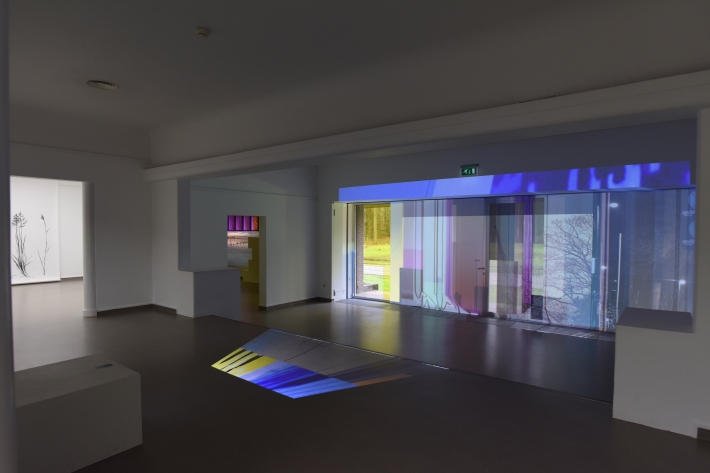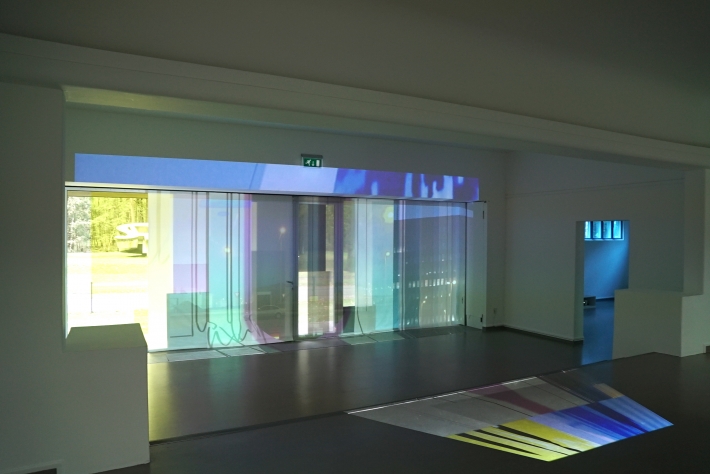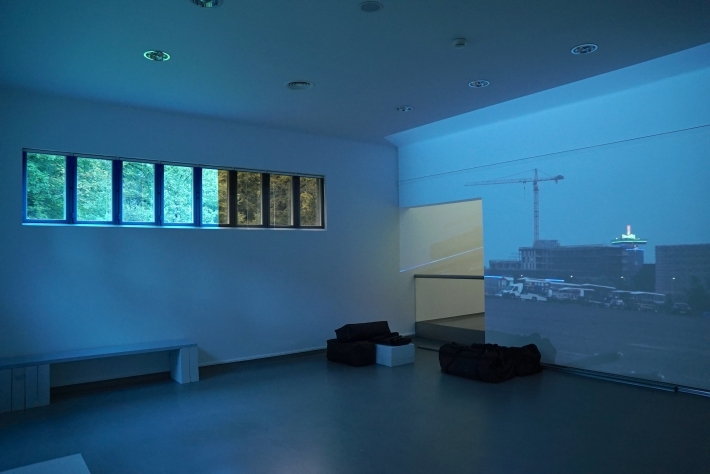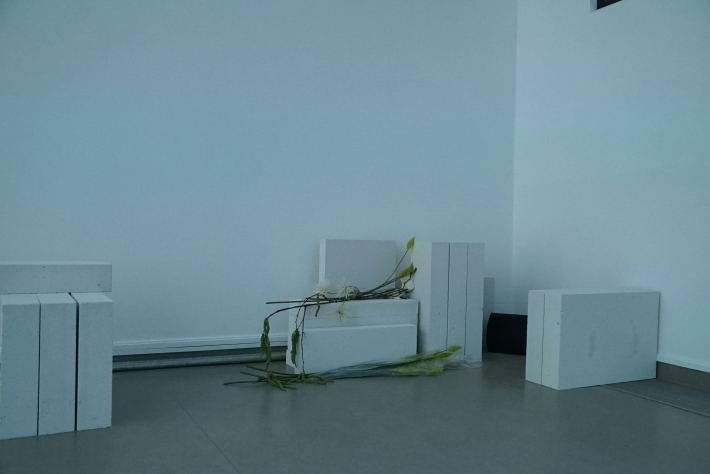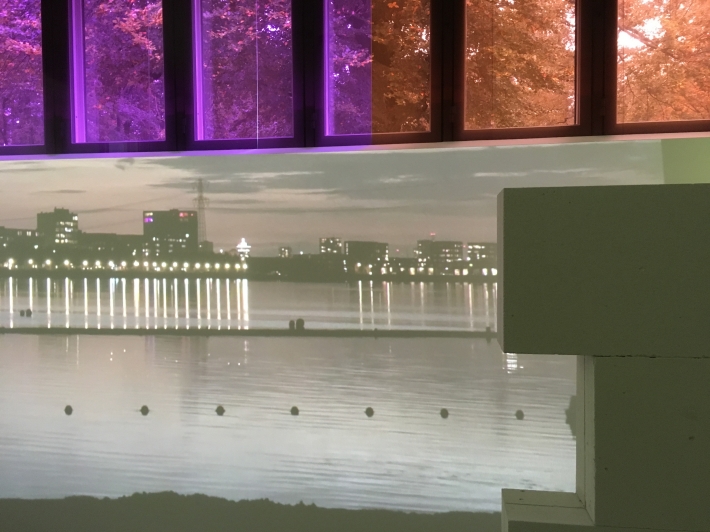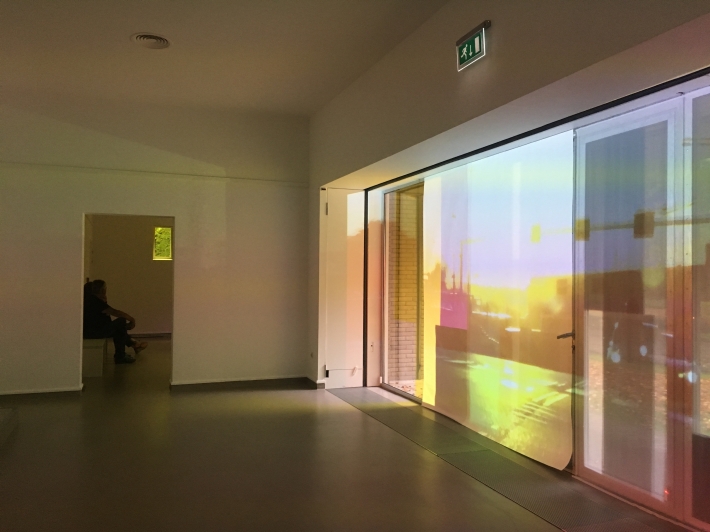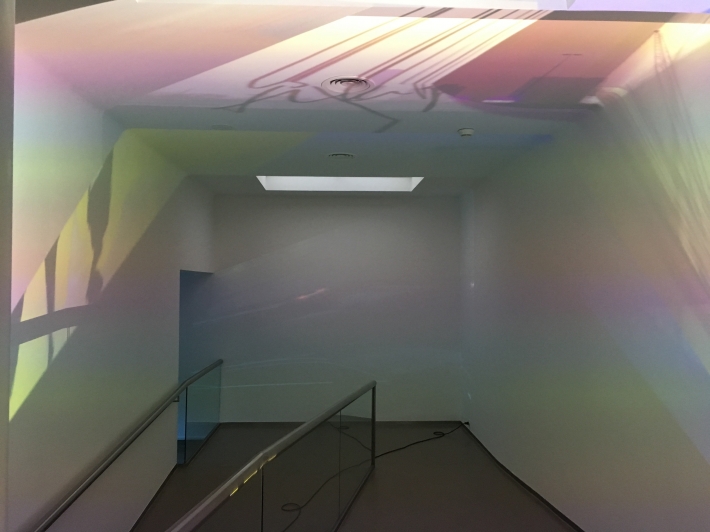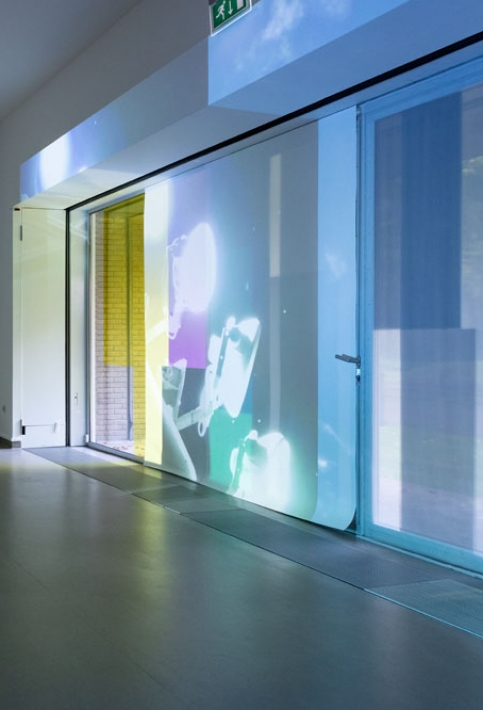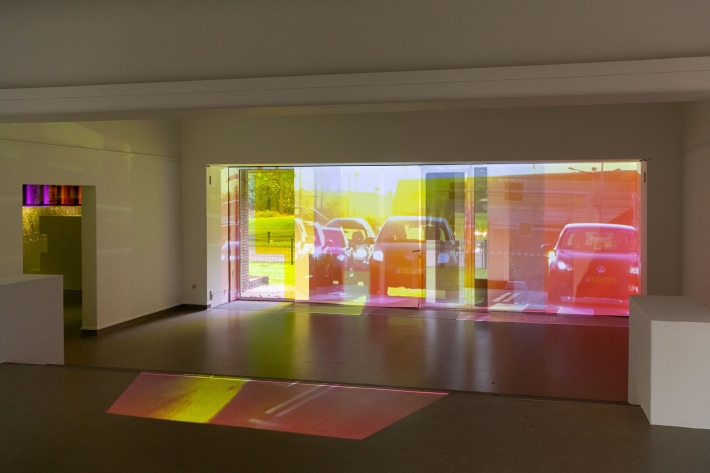Installation for 7 spaces
Kröller-Müller Museum, Otterlo (NL)
19 October 2019 - 29 March 2020
Video projections, aerated concrete blocks, wood, plexi glass, colour foils, diverse fabrics, iron, galvanized steel, charcoal on paper, inkjet print on paper, branches, sport bags, sail cloth, artificial flowers, plastic foil, with sound
Videoloops: 'Passage I', 23', 'Doorstep', 24', ''L'écrans lumineux, 23', heather', 14', 'Isola und Amazon loop', 10'
Sound compositions made in collaboration with Dirk Bruinsma; mixes of the audio of the video recordings, music and sound of Dirk Bruinsma, and Crash Log: Arnout Killian and van Edwin Munster.
https://krollermuller.nl/en/wineke-gartz-le-reve-la-route-le-mur
Photo 3 & 9 by Marjon Gemmeke
Wineke Gartz is featured in the series Vestibulum. This title refers to the place where the exhibitions take place: the former entrance to the museum in the building designed by architect Henry van de Velde and opened in 1938.
The site-specific installations of artist Wineke Gartz consist of a carefully composed stream of images. Gartz, originally a painter, has an impressive reservoir of images: photographs, videos, drawings and sketches that she has made in the course of her career.
Tableau vivant
For Le rêve, la route, le mur, Wineke Gartz draws on this reservoir of images to transform the former entrance of the museum into a tableau vivant. According to Gartz, looking is not just an activity of the eyes. The body, mind, memories, dreams and experience of the observer play an equally important role, as does the physical movement through the work and the space. With ‘le mur’ in the title, Gartz refers to the basic functions of a wall: to offer protection and security, as well as to exclude and imprison, but she also refers to walls as the concretization of a plan, a house, a dream: ‘le rêve’: a museum for a collection.
Walls, Dream
The starting point for Le rêve, la route, le mur is the building: its origin, the arrangement of the spaces adjacently or consecutively, the way in which people move through the spaces, the constantly changing incoming light. As always in her spatial collages, Gartz again addresses current topics, such as change and progress, resilience, growth and decline in nature and in urban areas, the influence of economic and technological development on the environment and what it means to be human in the current era. She uses colour filters and objects to manipulate the light and the route through the space. Moving and still images bring everyday life and the (urban) landscape within the walls of the museum.
Le rêve, la route, le mur, Kröller-Müller Museum, 2019
De site-specifieke installaties van kunstenaar Wineke Gartz (Eindhoven, 1968) bestaan uit een zorgvuldig gecomponeerde beeldenstroom. Gartz, van oudsher schilder en tekenaar, beschikt over een indrukwekkend reservoir aan beelden: foto’s, video’s, tekeningen en schetsen die ze in de loop van haar carrière maakt.
Ook voor Le rêve, la route, le mur put Wineke Gartz uit dit reservoir aan beelden om de oude entree van het museum te transformeren tot een ’levend schilderij’. Kijken is volgens Gartz geen activiteit van het oog alleen. Het lichaam, het verstand, de herinnering, de dromen en de ervaringen van de 'kijker' spelen een even belangrijke rol, en ook het fysieke bewegen door het werk en de ruimte heen. Met ‘le mur ’ in de titel verwijst ze naar de basale functies van muren: zowel bescherming en geborgenheid bieden als buitensluiten en gevangen houden, maar ook naar muren als concretisering van een plan, een droom: ‘le rêve’: een museum voor een collectie.
Muren
Het uitgangspunt voor Le rêve, la route, le mur is het gebouw: de ontstaansgeschiedenis, de ordening van de ruimtes na en naast elkaar, de manier waarop mensen zich door die ruimtes bewegen, het binnenvallende licht dat steeds verandert. Als altijd in haar ruimtelijke collages snijdt Gartz ook hier actuele thema’s aan als verandering en vooruitgang, veerkracht, opbouw en verval in de natuur en in stedelijke gebieden, de invloed van economische en technologische ontwikkeling op de omgeving en wat het betekent om mens te zijn in de huidige tijd. Met kleurfilters en objecten manipuleert ze het licht en de routing in de ruimte. Bewegende en stilstaande beelden brengen het dagelijks leven en het (stedelijk) landschap binnen de muren.
